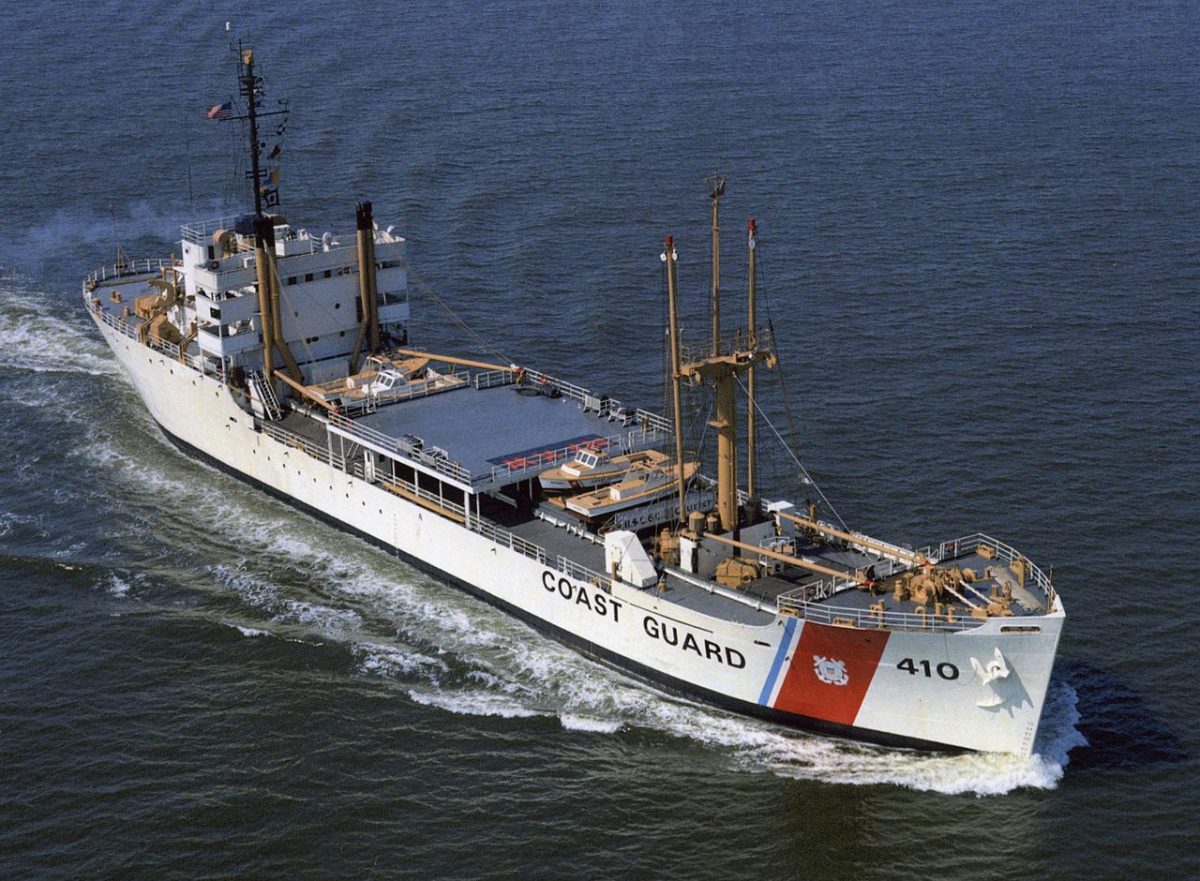The VOA and shortwave broadcasting story is interesting from an engineering perspective. Over several decades, the US government spend many millions of dollars building out transmitter sites both overseas and in the continental US to transmit information behind the iron curtain. The Coast Guard Cutter Courier WAGR-410 was a converted cargo ship fitted out with an RCA 150 KW Medium Wave transmitter on 1259 kHz and two Collins 207B1 35KW shortwave transmitters in the cargo hold.

The ship had various wire aerials, including the Medium Wave antenna supported by a barrage balloon.
From September of 1952 until 1964, The Courier was anchored primarily off of Rhodes, Greece broadcasting programs into the Soviet satellite states in eastern Europe and the Soviet Union itself. This arrangement made it difficult to jam, although expensive to support and maintain.

It was, however, just one of the methods of broadcasting used.
Through the 1950s and 1960s, VOA, Radio Free Europe, and Radio Liberty built extensive sites in Bilbus Germany, RARET in Portugal, Tangiers, Tinang in the Philippines, Morocco, Udon Thailand, Greenville Site A and B in North Carolina, Dixon and Delano California, Bethany Ohio, etc. Many of these sites supported multiple curtain arrays, rhombic antennas used to receive programming, generators, living facilities, etc. In other words, no expense was spared.
In Rhodes, Greece; eventually the transmitting equipment from the CGC Courier was transferred ashore as a VOA relay site. The Courier then returned home.

The point of the story; a lot of time, effort, and money went into broadcasting information to the Soviet Union and its satellite states over the period of four decades. From what I am told (by people who lived through that time period), the payoff really occurred in 1986, when the Chernobyl nuclear power plant accident happened. State-run Soviet radio and television were broadcasting Swan Lake, while RFE/RL had useful information including where the worst of the radiation was spreading, the wind direction, and how to protect humans from radiological hazards. For many average Soviet citizens, this was the tipping point and the collapse of the Soviet Union was inevitable from that point forward.
After the fall of the Soviet Union, many of these sites were shut down and the facilities were torn down because the cold war was over. Shortwave broadcasting was seen as expensive and unnecessary. Unfortunately, many warning signs were missed along the way and the present occupant in the Kremlin has wild dreams of a New Russian Empire. To revive shortwave in the 2020s would require another monumental and sustained effort starting with getting good receivers into the right hands. Shortwave broadcasts could become an alternative information source, especially if the Russia-Ukraine war becomes a protracted draw. However, it is not simply a matter of turning a few transmitters on and scheduling some Russian language programming.
Could the Russian state propaganda machine be engaged and defeated; yes. Will it be quick and easy; no. Is it worth it; yes. The real problem is apathy. The Russians have been subjected to terrible governance since pretty much the beginning of their existence. How to overcome that apathy and the corresponding sense of helpless victimhood of the Russians themselves is the question.
Regarding Vagabond-Able, after the USCGC Courier returned to the US, it was used as a training ship until 1972, when it was decommissioned.





